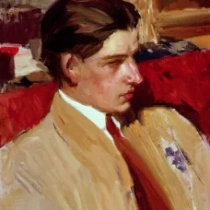 1863 - 1923
impressionism, realism
1863 - 1923
impressionism, realism
Description Joaquin Sorolla y Bastida
Joaquín Sorolla y Bastida, born on February 27, 1863, in Valencia, Spain, emerged as a master of light and color, a virtuoso whose canvases pulsated with the vitality of life. His artistic journey unfolded against the backdrop of a Spain undergoing profound societal changes, and Sorolla's ability to capture the spirit of his time set him apart in the annals of art history.
Sorolla's early life was marked by hardship, losing his parents at a young age. However, his artistic talent, evident from childhood, paved the way for a scholarship to study in Rome. The Italian Renaissance, with its luminous landscapes and mastery of light, left an indelible imprint on Sorolla's artistic sensibilities.
Returning to Spain, Sorolla established himself as a prominent artist. His technical skill and a penchant for capturing the play of sunlight on water became hallmarks of his oeuvre. Sorolla's beach scenes, with their dynamic compositions and radiant hues, transported viewers to the sun-drenched coasts of Valencia.
The artist's success extended beyond Spain, earning international acclaim. His exhibition in Paris in 1906 solidified his reputation, leading to further exhibitions in Europe and the United States. Sorolla's ability to evoke the tangible sensations of the sea, the warmth of sunlight, and the palpable energy of his subjects captivated audiences worldwide.
Sorolla's thematic range was diverse, encompassing portraiture, landscapes, and social commentary. His paintings often featured his family, providing intimate glimpses into domestic life. The luminescent "Portrait of María at La Granja" exemplifies his ability to infuse familial scenes with transcendent beauty.
The artist's commitment to social commentary found expression in works like "Another Marguerite!"—a powerful indictment of child labor. Sorolla's ability to merge artistic prowess with a social conscience set him apart in an era of shifting values.
Tragedy struck Sorolla in 1920 when his wife, Clotilde, passed away. The loss profoundly impacted his art, leading to a more introspective and melancholic tone in his later works. Sorolla's health declined, and he succumbed to a stroke on August 10, 1923.
Joaquín Sorolla y Bastida's legacy endures, a testament to his mastery of light and color. His paintings, alive with the sunlit palette of the Mediterranean, remain windows into an era of transformation. Sorolla's ability to infuse his canvases with the warmth of Spanish sunlight ensures his place as a maestro whose art transcends the confines of time and geography.
Gallery
Paintings Joaquin Sorolla y Bastida
F.A.Q Section
"Sad Inheritance" (1899): A powerful social commentary painting depicting children affected by polio.
"After the Bath, Valencia" (1908): A luminous beach scene capturing the play of light on the water and figures.
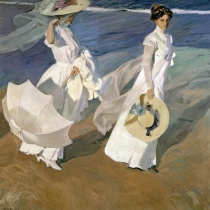
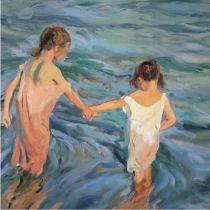
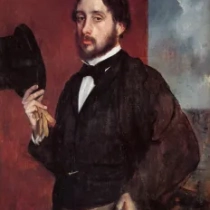
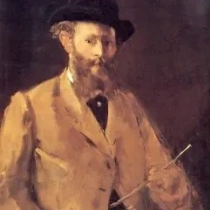
No Comments Yet...